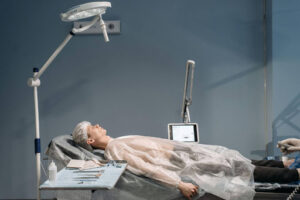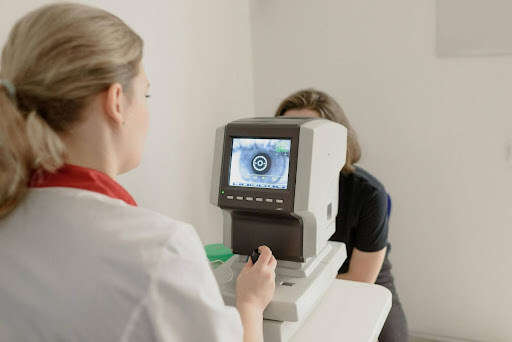The healthcare industry is undergoing a seismic shift, and at the heart of this transformation is medical device software development. Gone are the days when medical devices were just hardware—today, they’re powered by sophisticated software that’s revolutionizing patient care. From improving diagnostic accuracy to enabling remote monitoring, software development for medical devices is reshaping how we deliver and experience healthcare. But what exactly makes this technology so transformative? In this article, we’ll explore how medical device software is leading a patient care revolution and why it’s a game-changer for the future of healthcare.
The Role of Medical Device Software in Modern Healthcare
Enhancing Diagnostic Accuracy
Imagine a world where diseases are detected earlier, more accurately, and with less guesswork. That’s the power of medical device software development. Advanced algorithms, AI, and machine learning enable devices to analyze complex data and provide precise diagnoses.
For example, AI-powered imaging software can detect early signs of cancer in medical scans with incredible accuracy. This improves patient outcomes and reduces the burden on healthcare providers. It’s like having a second pair of eyes—one that never gets tired.
Enabling Remote Patient Monitoring
Remote patient monitoring is no longer a futuristic concept—it’s here, and it’s changing lives. Thanks to medical device software, patients with chronic conditions like diabetes or heart disease can now be monitored in real time from the comfort of their homes.
Wearable devices and connected sensors collect data, which software analyzes to provide actionable insights. This continuous monitoring allows doctors to intervene early, preventing complications and hospital readmissions. It’s healthcare but on your terms.
Streamlining Clinical Workflows
Healthcare providers are often overwhelmed by paperwork and administrative tasks. However, with the development of software for medical devices, those days are numbered.
Medical device software automates routine tasks, integrates seamlessly with electronic health records (EHRs), and facilitates data-driven decision-making. This saves time and reduces errors, empowering healthcare providers to focus on what really matters—patient care.
Key Trends in Medical Device Software Development
Artificial Intelligence and Machine Learning
AI and machine learning are the driving forces behind the next generation of medical devices. These technologies enable predictive analytics, personalized treatment plans, and even robotic surgeries.
For instance, AI-powered software can predict patient deterioration hours before it happens, giving doctors a critical head start. It’s like having a crystal ball for healthcare.
Internet of Medical Things (IoMT)
The Internet of Medical Things (IoMT) connects devices like never before. These connected devices collect and analyze data in real time from smart inhalers to glucose monitors.
This trend transforms how we manage chronic diseases, monitor post-operative recovery, and even track public health trends. It’s healthcare but smarter.
Telemedicine Integration
Telemedicine is booming, and medical device software is playing a key role. By integrating with telemedicine platforms, medical devices enable virtual consultations, remote diagnostics, and real-time patient engagement.
This is especially beneficial for rural areas, where access to healthcare is often limited. It’s like bringing the doctor’s office to your living room.
Personalized Medicine
One-size-fits-all treatments are becoming obsolete. Medical device software enables personalized medicine by tailoring treatment plans to individual patient data.
For example, software can analyze genetic information to recommend the most effective medications or therapies. It’s healthcare but personalized just for you.

Challenges in Medical Device Software Development
Regulatory Compliance
Developing medical device software isn’t just about writing code—it’s about navigating a maze of regulations. The stakes are high, from FDA approvals to HIPAA compliance.
But while compliance can be challenging, it’s essential for ensuring patient safety and building trust.
Data Security and Privacy
With great power comes great responsibility. Medical device software handles sensitive patient data, making security a top priority.
Encryption, secure authentication, and regular audits are just a few measures to protect this data. After all, trust is the foundation of healthcare.
Interoperability
Interoperability is key in a world of connected devices. Medical device software must seamlessly integrate with other systems, from EHRs to telemedicine platforms.
This ensures data flows smoothly, enabling better care coordination and improved patient outcomes.
Best Practices for Developing Medical Device Software
User-Centric Design
Your software should be designed with the end-user in mind. Conduct user testing, gather feedback, and iterate on the design to ensure it meets user needs. This user-centric approach not only leads to higher satisfaction but also makes the audience feel valued and integral to the success of the software.
A user-centric approach leads to higher satisfaction and better outcomes.
Agile Development Methodology
Agile development is the way to go. You can iterate quickly and respond to feedback in real time by breaking the project into smaller, manageable chunks.
This approach ensures that the final product meets user needs and stays ahead of the competition.
Collaboration with Healthcare Professionals
Involve healthcare professionals in the development process. Their insights can help ensure the software meets clinical needs and adheres to medical best practices.
After all, they’re the ones who’ll be using it.
Continuous Testing and Quality Assurance
Testing isn’t a one-time event—it’s an ongoing process. Rigorous testing and quality assurance are essential for identifying and resolving issues early.
This ensures that the software is reliable, secure, and ready for real-world use, providing security and trust to healthcare professionals and patients.
Conclusion
Medical device software development is more than a technological advancement—it’s a revolution in patient care. From enhancing diagnostics to enabling remote monitoring, this technology transforms how we deliver and experience healthcare.
As we look to the future, the potential of software development for medical devices is limitless. By embracing these innovations, we can create a healthcare system that’s more efficient, effective, and patient-centered than ever before.


